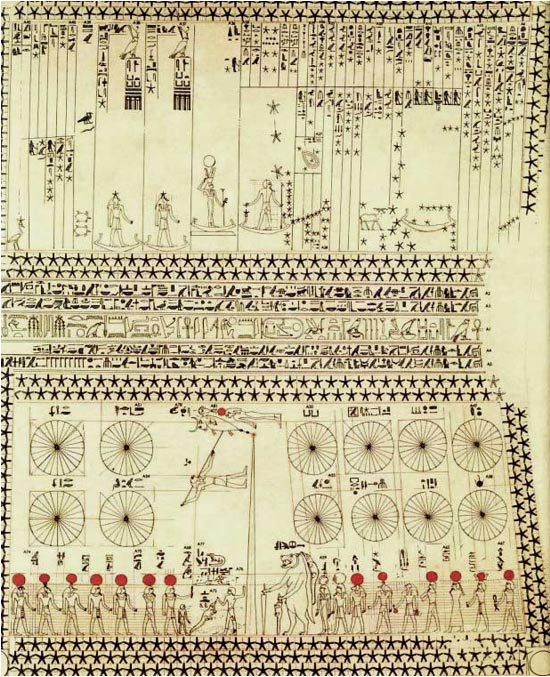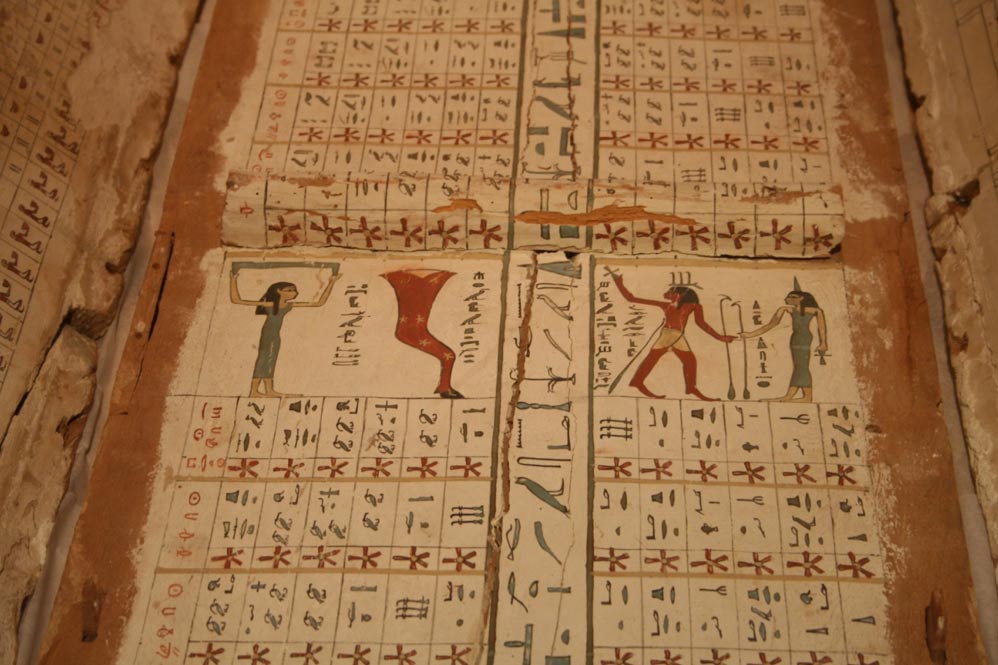Star charts reveal how ancient Egyptians planned to navigate the sky after death
Like others in the ancient world in the Americas, Asia, Europe and around the Mediterranean, Egyptian pharaohs and nobles associated stars with their gods or thought they could be deified by becoming immortal stars in the night sky. They tried to ensure their ascension and navigation of the night skies by having elaborate star charts and calendars painted in their tombs. They also had eyes painted on their coffins so they could see what was going on in the world.
Sarah Symons, a researcher from McMaster University in Ontario, Canada, says she believes the stars painted on the outsides of coffins were like a map for the dead to navigate the night skies. Scholars previously thought they were like clocks for keeping time, which would have been important for certain rituals, says Scientific American in an article about Symons’ research.
The article states:
“Her conclusions are based on years of research into ancient Egyptian beliefs, extensive surveys of the 27 known star tables or fragments of tables in the world and, using planetarium software, the ability to easily recreate the nighttime sky as it appeared more than 4000-odd years ago along the Nile. Symons and co-author Elizabeth Tasker of Hokkaido University in Japan describe the work in the October issue of Scientific American.”
The star charts’ layout has been understood for decades, Symons and Tasker write. The ancient astronomers’ paintings on some of the tombs divided a table into quarters with a vertical and a horizontal stripe. Along the horizontal stripe is a line invoking a number of Egyptian gods with an offering. Along the vertical stripe they painted images of four of the gods.
The Scientific American article examines the star table of Idy of Asyut, which has one of the best-preserved star tables. It is housed at the University of Tübingen Museum in Germany.

The sky goddess Nut in an ancient Egyptian star chart that differs from the one studied by Sarah Symons and Elizabeth Tasker. (Photo by GoldenMeadows / Wikimedia Commons)
Across the top of the table is printed the civil Egyptian calendar of 10-day weeks and 12 months of 30 days, for a total of 360 days. They painted on the “half week” of five odd days at the year’s end in a column at the table’s end.
They printed the star names in hieroglyphics in columns with 12 rows. Every cell depicts the rising or setting of a certain star over the horizon, Scientific American says.

The star chart of Senemut, which differs from the one detailed in the Scientific American article. (Photo by SenemmTSR/Wikimedia Commons)
Idy’s star chart depicts the goddesses Nut, the god Sahu and the leg of an ox, among other deities. Nut was the goddess of the sky, and she is seen holding up the heavens on the star chart. Meskhetiu, or the ox leg, shows seven stars, which scholars think represent the constellation of the Big Dipper.
Idy’s star chart also shows Sopdet or Sirius rising above the horizon. Sirius was absent for the sky for about 70 days in ancient Egypt. Its rise after the absence every year signaled the vitally important Nile flood.
The star table of Idy does not show all of the columns of the ideal star table. “Even partial representations were apparently powerful enough to allow the dead to access the complete chart in the afterlife,” Scientific American says.
Featured image: A detail of the star chart of Idy of Asyut showing the sky goddess Nut holding up the heavens at the top. (Photo by Einsamer Schütz / Wikimedia Commons)
By Mark Miller




















Comments
Hi Rush. Interetsting comments. I don't know where one could find a high-quality image of Senemut’s tomb, though there are high-quality images of some statues of him here: https://commons.wikimedia.org/wiki/Category:Senenmut. Sorry I couldn’t be of more help.
Mark Miller
Mark
While searching for images and descriptions of Meskhetiu, I came across this forum page titled "Star charts reveal how ancient Egyptians planned to navigate the sky after death." The image of Meskhetiu as the thigh of a bull is better identified as a bullroarer, and it is somewhat different than the seven stars of the Big Dipper. Of particular interest regarding navigation through the Afterlife is the display of three stars on a straight line. They represent the string of the bullroarer.
The lance of Horus represents the zenith meridian of the Earth passing through the four stars of the dipper. The last star of the string is a sun symbol and the spike pointed to it from Draco-Tauret represents the ecliptic meridian. As such, the image of Meskhetiu represents the Meridian of the First Dawn. This time is the primary focus of the Giza Complex. It occurs under the circlet of west Pisces above the cup of Aquarius. This is the alignment of Seshat and represents the vernal equinox of 2378 AD, 365 years from now.
This message originated in Mesopotamia and has been carried through Judaism, Early Christianity and Islam. The Crossing of the Reed Sea by Moses, the Last Supper of Jesus, and the night ride by Muhammad on Al Buraq are later representations of the First Dawn. Also, the Maya had the same First Dawn and that was picked up in the Book of Mormon. Thus, your title is spot on, and still viable.
The Afterlife, however, has been difficult for cultures based upon Rational Materialism to grasp. Science as we know it today is oriented only to Mind and Matter. Science represses Emotion and denies Spirituality, even though individual scientists may not. The Egyptians, and nearly every culture before them, identified reality as Spiritual Materialism, or Inspiration and Matter, Cosmic Spirituality. Thus, navigation through the Afterlife required that the Spirit of the Journey be acquired to reach Meskhetiu, or the Top of the Heavens. The most important factors in any journey are where the journey begins and where it ends, the First Dawn and the Last Sunset.
The choice of a First Dawn is not arbitrary in a Spiritual Materialism Reality where Birth is a Reincarnation and Death is the preparation for the Rebirth. Reincarnation is a process of reentering the living flesh. This is done by transferring the personal Journeys from the First Dawn and back through the End Time to the First Dawn in future generations. The experience of life must be passed on in order to achieve Eternal Cognition, the Light of the World.
The Pyramid Builders of Egypt "knew" that Rational Materialism would destroy Spiritual Materialism because the more knowledge that is acquired results in longer periods of learning. The result is that descendant cultures do not live long enough to learn all the wisdom that has to be passed on from Ancestral Generations. To remedy this concern, they established their First Time location at Rostau, in Giza, where all the Ancestors can be found and reincarnated as Spiritual Materialism is restored to the Dead Souls bound by Rational Materialism.
As a result of my investigation, I am looking for a high quality image of Senenmut's tomb images to determine if the original included navigational parameters. If you know of one, please let me know, thanks.